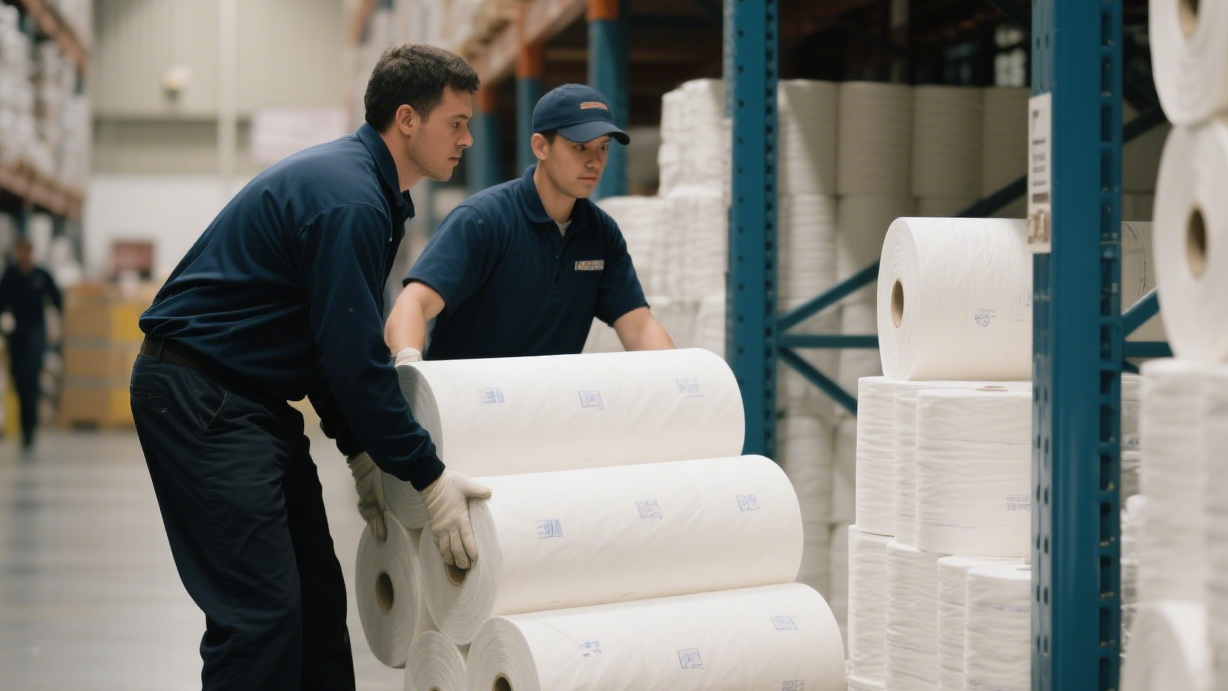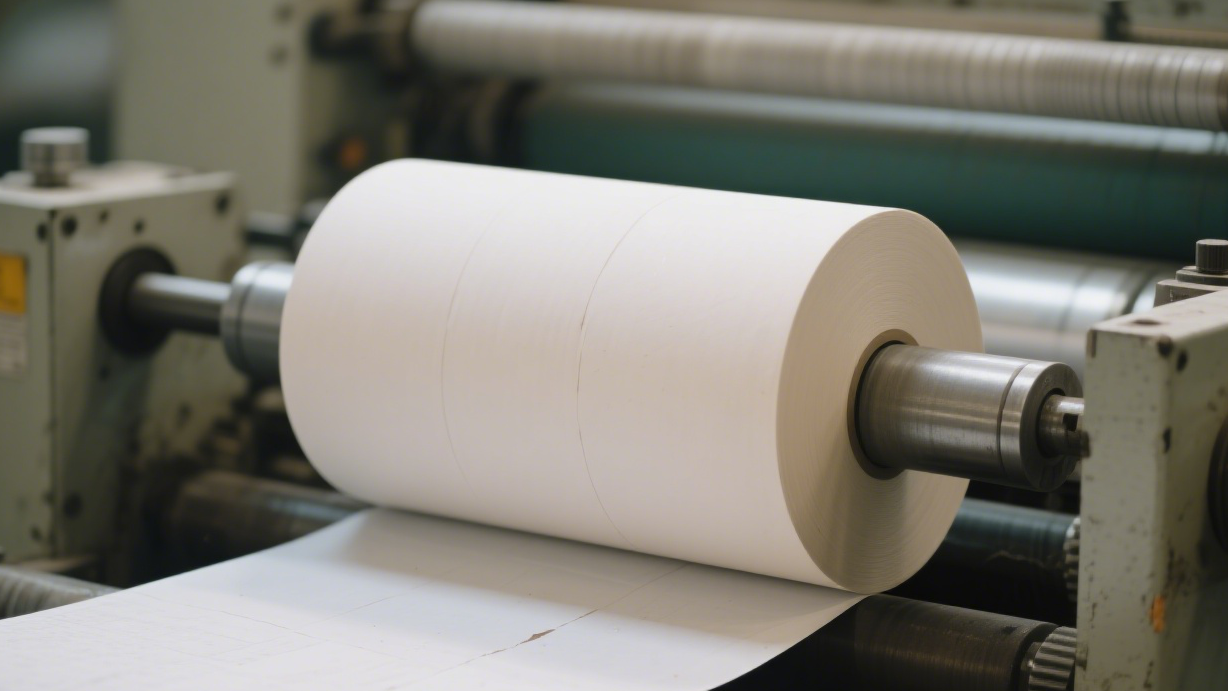close
Choose Your Site
Global
Social Media
Views: 0 Author: Site Editor Publish Time: 2025-07-11 Origin: Site
“Ply” means the number of paper layers in each sheet: 1-ply uses a single layer, making it thinner and budget-friendly, while 2-ply bonds two layers for extra softness and strength. This difference affects everything from cost and comfort to plumbing safety and environmental impact. For example, 1-ply breaks down easily, reducing clogs in pipes, while 2-ply offers better absorbency with fewer sheets per use.
Choosing between 1-ply and 2-ply means balancing cost, comfort, and sustainability. Businesses like schools or hotels often pick 1-ply for high-traffic restrooms to save money, while homes or offices prefer 2-ply for its gentler feel. Bulk buyers also consider “unconverted rolls”—large, unwrapped commercial rolls that reduce waste and refill frequency. This makes them ideal for facilities prioritizing efficiency.
This article will break down four critical factors to help you decide:
Cost & Value: 1-ply is cheaper upfront, but 2-ply may save long-term by reducing sheet usage.
Softness & Strength: 2-ply is more durable and skin-friendly; 1-ply can tear easily.
Eco-Impact: 1-ply uses less material, but 2-ply’s recycled options boost sustainability.
Plumbing Safety: 1-ply dissolves fastest; 2-ply needs “septic-safe” labels to avoid clogs.
By the end, you’ll know exactly which unconverted rolls fit your needs—whether you prioritize savings, comfort, or the planet.

“Ply” refers to the number of paper layers bonded together in a single sheet of toilet paper:
1-ply: One thin layer (like a single sheet of notebook paper).
2-ply: Two layers pressed together (like a soft sandwich of paper).
How ply affects performance:
| Feature | 1-Ply | 2-Ply |
|---|---|---|
| Thickness | Thinner, lightweight | Twice as thick, cushioned |
| Strength | Tears easily | Resists tearing; more durable |
| Absorbency | Low; requires more sheets per use | High; fewer sheets needed |
| Texture | Can feel rough | Softer, gentler on skin |
Why layers matter:
More plies = better moisture trapping (e.g., 2-ply absorbs spills faster).
Bonding technology: Layers are glued or embossed to stay intact during use.
Unconverted rolls (also called jumbo or coreless rolls) are large, industrial-sized toilet paper rolls designed for commercial dispensers. They lack individual packaging and often omit cardboard cores.
Why businesses use them:
Reduced waste:
No cardboard cores or wrappers → less trash.
Example: A coreless roll saves ~5% space vs. traditional rolls.
Lower replacement frequency:
One jumbo roll = 3–4 standard rolls → fewer restocks.
Ideal for high-traffic spaces (schools, stadiums).
Cost efficiency:
Bulk purchasing lowers cost per roll by 15–30%.
Fewer deliveries → saved fuel and labor time.
Bonus fact: Unconverted rolls often come in 1-ply or 2-ply options, letting businesses balance budget (1-ply) and comfort (2-ply).

The upfront cost difference between 1-ply and 2-ply is a key factor:
1-Ply:
Lower cost per roll (up to 30% cheaper than 2-ply) due to less material used.
Ideal for high-traffic areas like schools, airports, and public restrooms where budget and volume matter most.
2-Ply:
Higher initial cost but reduces sheet usage by 40–50% per wipe thanks to better absorbency, potentially saving long-term costs.
Favored in offices, hotels, and homes where comfort justifies the price.
Unconverted Rolls Impact: Both types come in unconverted rolls (large, coreless jumbo rolls). 1-ply offers more rolls per budget, while 2-ply balances cost with user satisfaction.
Cost Comparison Table:
| Factor | 1-Ply | 2-Ply |
|---|---|---|
| Cost per Roll | 0.50–0.80 | 0.90–1.50 |
| Sheets Used per Wipe | 6–8 | 3–4 |
| Best For | Tight budgets; high traffic | Comfort-focused spaces |
User experience varies dramatically between plies:
1-Ply:
Thinner and less cushioned, often feeling rough or abrasive—especially problematic for sensitive skin.
2-Ply:
Softer texture from dual-layer padding, reducing skin irritation. Preferred in healthcare settings, offices, and homes.
Performance differences affect efficiency:
1-Ply:
Prone to tearing during use; low moisture retention forces users to grab extra sheets.
2-Ply:
High durability (resists ripping) and superior absorbency, ensuring thorough cleaning with fewer sheets.
Performance Table:
| Metric | 1-Ply | 2-Ply |
|---|---|---|
| Tear Resistance | Low | High |
| Absorbency | 1x (base) | 2x |
| User Efficiency | Requires more sheets | Fewer sheets needed |
Sustainability depends on materials and usage patterns:
1-Ply:
Uses less material per sheet but often requires higher consumption volume, negating resource savings.
2-Ply:
More resource-intensive to produce, but reduced consumption (~40% less waste) and eco-options (recycled/bamboo) lower net impact.
Unconverted Rolls Benefit: Coreless designs eliminate cardboard waste, saving ~5% landfill space per roll—ideal for businesses targeting zero-waste goals.
Pipe health varies by ply:
1-Ply:
Breaks down fastest in water, making it the safest for septic systems and aging plumbing.
2-Ply:
Slower dissolution; requires “septic-safe” certification to avoid clogs. Unsuitable for sensitive drainage without labels.
Safety Checklist:
For septic systems: Always choose 1-ply or certified 2-ply.
Avoid 2-ply in RVs, boats, or buildings with narrow pipes.

1-ply unconverted rolls (large, coreless jumbo rolls) excel in specific settings due to their cost-efficiency, plumbing safety, and low waste. Ideal scenarios include:
High-Traffic Public Restrooms:
Airports, stadiums, and schools need durable, budget-friendly options. 1-ply’s lower cost per roll saves money when serving thousands daily. Each jumbo roll lasts longer, reducing restocking labor by ~30%.
Budget-Conscious Businesses:
Facilities like public libraries or government buildings prioritize minimizing expenses. 1-ply costs 40–50% less upfront than 2-ply, freeing funds for other needs.
Sensitive Plumbing Systems:
RVs, boats, and older buildings with narrow pipes benefit from 1-ply’s rapid breakdown, preventing clogs. It’s certified “septic-safe” and dissolves 2x faster than standard 2-ply.
1-Ply Quick-Reference Table:
| Scenario | Why 1-Ply Works | Real-World Example |
|---|---|---|
| High-traffic restrooms | Cheaper; fewer roll changes | Stadiums saving $1,200/year |
| Tight budgets | 0.50–0.80 per roll (vs. 2-ply’s $0.90+) | Public schools |
| Delicate plumbing | Dissolves instantly; no “fatbergs” | RVs, septic tanks |
2-ply unconverted rolls balance comfort, efficiency, and sustainability, making them ideal for spaces valuing user experience:
Comfort-Focused Spaces:
Offices, hotels, and healthcare facilities use 2-ply for its softness and strength. Its dual layers reduce skin irritation—critical in hospitals or luxury hotels.
Balancing Cost and Experience:
Homes or boutique businesses choose 2-ply for long-term savings: though pricier upfront, its absorbency cuts sheet usage by 40–50%, lowering waste disposal costs.
Eco-Conscious Buyers:
Sustainable 2-ply options (e.g., recycled/bamboo fibers) appeal to green initiatives. Brands like Compact by GP PRO use 25% recycled content and EcoLogo certification, reducing landfill waste by 5% per coreless roll.
2-Ply Quick-Reference Table:
| Scenario | Why 2-Ply Shines | Sustainability Tip |
|---|---|---|
| Offices/hotels | Softness = higher guest satisfaction | Pair with coreless rolls to cut waste |
| Eco-focused households | Bamboo/recycled options available | Choose FSC-certified brands (e.g., Cashmere) |
| Cost-experience balance | Fewer sheets = long-term savings | Use 1500-sheet jumbo rolls (lasts 4x longer) |
When comparing unconverted rolls (large, bulk jumbo rolls), focus on sheets per roll—not roll count or ply alone. Here’s why:
1-ply vs. 2-ply sheet efficiency:
1-ply rolls typically have more sheets (e.g., 1,000+ sheets) but lower absorbency, so users may need 2x more sheets per wipe.
2-ply rolls have fewer sheets (e.g., 500–800) but higher absorbency, reducing sheet usage by 40–50%.
True cost calculation:
Price per sheet = Total cost ÷ Total sheets
Example: A 20 case of 1-ply (10 rolls × 1,000 sheets = 10,000 sheets) = 0.002/sheet
vs. a 25 case of 2-ply (10 rolls × 600 sheets = 6,000 sheets) = 0.004/sheet—but fewer sheets needed per use.
Value Comparison Table:
| Type | Avg. Sheets per Roll | Cost per Roll | Sheets per Wipe | Cost per Wipe |
|---|---|---|---|---|
| 1-Ply | 1,000+ | 0.50–0.80 | 6–8 | 0.012–0.016 |
| 2-Ply | 500–800 | 0.90–1.50 | 3–4 | 0.012–0.016 |
→ Tip: Always check total sheets on bulk packaging labels—not just roll size.
Certifications ensure quality, sustainability, and safety. Prioritize these labels:
Eco-labels:
FSC (Forest Stewardship Council): Ensures paper comes from responsibly managed forests.
Recycled Content: Look for 50–100% post-consumer recycled material (e.g., Seventh Generation).
Bamboo Certification: Brands like ecoHiny use fast-growing bamboo, reducing deforestation by 30%.
Septic-Safe Certification:
Critical for 2-ply rolls, which dissolve slower. Certifications (e.g., INDA/EDANA) confirm safe breakdown in pipes and septic tanks.
Avoid clogs: Non-certified 2-ply can damage aging plumbing or RVs.
Key Labels Quick Guide:
✅ FSC → Sustainable sourcing
✅ Recycled Content ≥50% → Lower environmental impact
✅ Septic-Safe → Plumbing protection (especially for 2-ply)
✅ EcoLogo/Green Seal → Non-toxic, biodegradable materials
Unconverted rolls require specific dispensers. Mismatches cause jams or waste:
Coreless Rolls:
Fit coreless dispensers only (no central tube). Ideal for reducing cardboard waste.
Check: Roll diameter (often 4"–5") and holder mechanism (e.g., spring-loaded vs. gravity-fed).
Cored Jumbo Rolls:
Require large-roll dispensers with a central spindle. Common in schools and airports.
Measure: Core inner diameter (typically 1.5"–2") and roll width (e.g., 4.5").
Compatibility Checklist:
Existing Dispenser Type:
Coreless? Cored? Adjustable?
Roll Dimensions:
Match roll width/diameter to dispenser specs (e.g., 5" width max).
Loading Mechanism:
Gravity-fed dispensers handle heavier rolls (>2 lbs); spring-loaded suits lighter rolls.
A: It depends on your priorities:
Yes, for comfort-focused settings:
2-ply offers superior softness, reduced skin irritation, and better absorbency—ideal for homes, offices, or healthcare facilities where user comfort is key.
Long-term savings: Though pricier upfront, its efficiency (40–50% fewer sheets per wipe) may lower overall usage and costs.
No, for high-volume/low-budget sites:
Public restrooms (airports, schools) prioritize cost and plumbing safety. 1-ply costs 30–50% less per roll and dissolves faster, reducing clogs and restocking frequency.
A: Yes, with two considerations:
Dispenser compatibility:
Unconverted rolls (coreless jumbo rolls) require commercial-style dispensers.
Practicality for households:
Ideal for large families or bulk buyers: One jumbo roll (≈3–4 standard rolls) lasts weeks, cutting waste and shopping trips.
Eco-perk: Coreless designs eliminate cardboard waste, aligning with zero-waste goals.
A: 1-ply is strongly recommended for two reasons:
Faster breakdown:
1-ply dissolves rapidly in holding tanks, preventing clogs and pump damage. 2-ply dissolves slower unless labeled “septic-safe”.
Space and cost efficiency:
Compact storage: 1-ply rolls take less space—critical in RVs/boats. Bulk unconverted 1-ply rolls further reduce storage needs.
Budget-friendly: Lower cost suits frequent replacements in mobile settings.
Tip: For RVs, pair 1-ply with enzyme-based tank treatments to accelerate decomposition.
Choose 1-ply for economy and plumbing safety (ideal for public restrooms/RVs). Pick 2-ply for comfort and efficiency (best for homes/hotels). Unconverted rolls offer bulk buyers eco-friendly savings with coreless designs. Always match your ply choice to top priorities: budget, comfort, or sustainability.